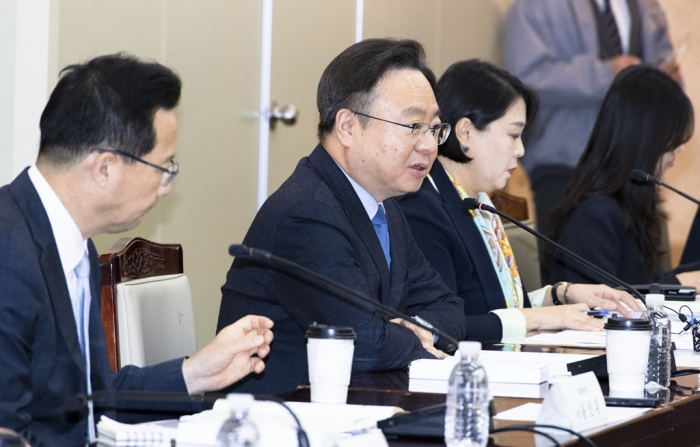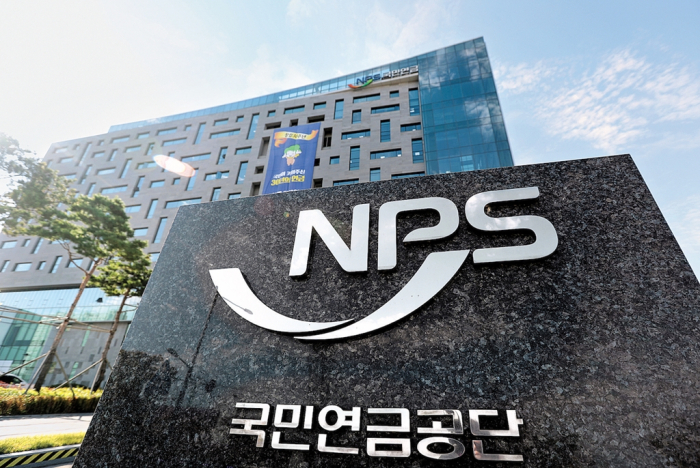Pension funds
NPS expects Korea’s WGBI inclusion to attract $56 billion in foreign funds
Investments in Korean bonds have returned relatively lower yields than their foreign peers, partly due to the Korea discount
By Nov 24, 2024 (Gmt+09:00)
2
Min read
Most Read
LG Chem to sell water filter business to Glenwood PE for $692 million


Kyobo Life poised to buy Japan’s SBI Group-owned savings bank


KT&G eyes overseas M&A after rejecting activist fund's offer


StockX in merger talks with Naver’s online reseller Kream


Mirae Asset to be named Korea Post’s core real estate fund operator



The National Pension Service (NPS), South Korea’s state-run pension fund and the country’s largest institutional investor, expects some $56 billion inflow of foreign funds following Korea’s inclusion in the WGBI, one of the world’s leading bond indices.
The NPS fund management committee, the state fund’s top decision-making body, said at a meeting on Friday that Korea’s addition to the WGBI will improve the performance of domestic bond portfolios by increasing local bond yields.
"We will maintain our operational strategy while enhancing our capacity to respond to market fluctuations, ensuring that the WGBI inclusion translates into tangible performance improvements," Health and Welfare Minister Cho Kyoo-hong, who heads the committee, said at the meeting.
Last month, FTSE Russell, the global index subsidiary of London Stock Exchange Group, said that Korea will be included in its FTSE World Government Bond Index, or WGBI, from November 2025.

The inclusion comes after FTSE Russel placed Korea on its watch list for two years.
The WGBI is one of the world’s four major indices alongside those of S&P, Dow Jones and MSCI.
About $2.5 trillion in funds worldwide is estimated to track the WGBI, which includes government bonds from more than 20 countries such as the US, the UK, Canada and Japan.
The NPS said the Korean government bonds are predicted to make up about 2.22% of the WGBI, or some $56 billion.
LOWER INVESTMENT RETURNS THAN OVERSEAS BOND YIELDS
Yields on domestic bonds owned by the NPS have lagged behind those of overseas bonds. From 1988 to the end of last year, the annualized yield of domestic bonds was 3.61% on average, lower than the 4.02% rate for overseas bonds.

The gap has further widened in recent years, with domestic bond yields hovering around 0.15% from 2021 to 2023, compared to 3.47% for overseas bonds over the same period.
The NPS committee also approved a revised pension fund management plan that requires an additional 460 billion won to ensure smooth pension payments this year.
As a result, the budget for pension payments in 2024 was raised to 43.83 trillion won from 43.37 trillion.
“Maintaining higher investment returns is crucial to the sustainability of the NPS’ operations,” said Cho. “While we achieved a relatively high fund performance rate of 9% as of the end of September, we need a more careful response to the rising uncertainty in global financial markets, such as geopolitical risks in the Middle East.”
Write to Byeong-hwa Ryu at hwahwa@hankyung.com
In-Soo Nam edited this article.
More to Read
-
 Pension fundsNPS to hike risky asset purchases under simplified allocation system
Pension fundsNPS to hike risky asset purchases under simplified allocation systemMay 02, 2024 (Gmt+09:00)
2 Min read -
 Sovereign bondsKorea desperately seeks global bond index inclusion to rescue won
Sovereign bondsKorea desperately seeks global bond index inclusion to rescue wonApr 30, 2024 (Gmt+09:00)
2 Min read -
 Pension fundsNPS fills basket with China reopening, cosmetics shares; tech firms sold
Pension fundsNPS fills basket with China reopening, cosmetics shares; tech firms soldOct 06, 2023 (Gmt+09:00)
3 Min read -
 Sovereign bondsKorea on watch list for WGBI inclusion; hoping for bond inflows
Sovereign bondsKorea on watch list for WGBI inclusion; hoping for bond inflowsSep 30, 2022 (Gmt+09:00)
3 Min read
Comment 0
LOG IN


